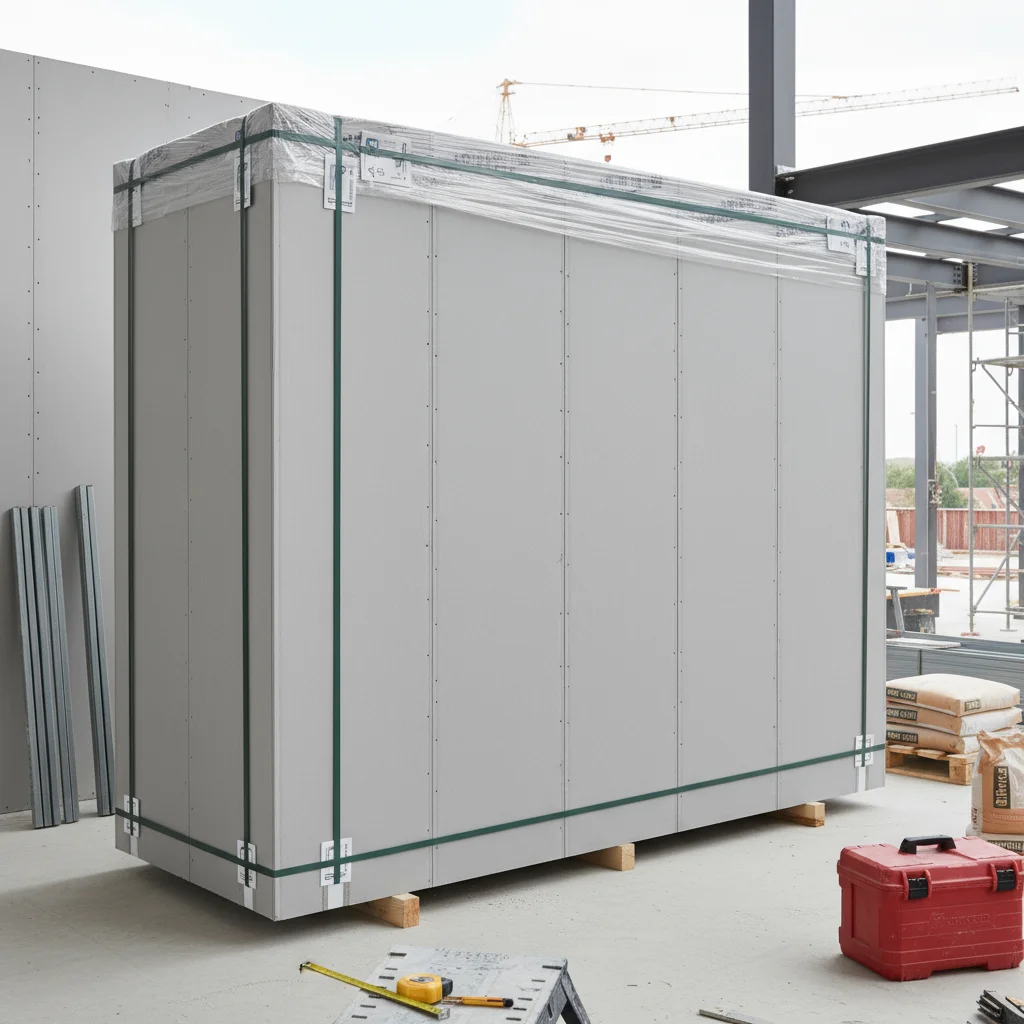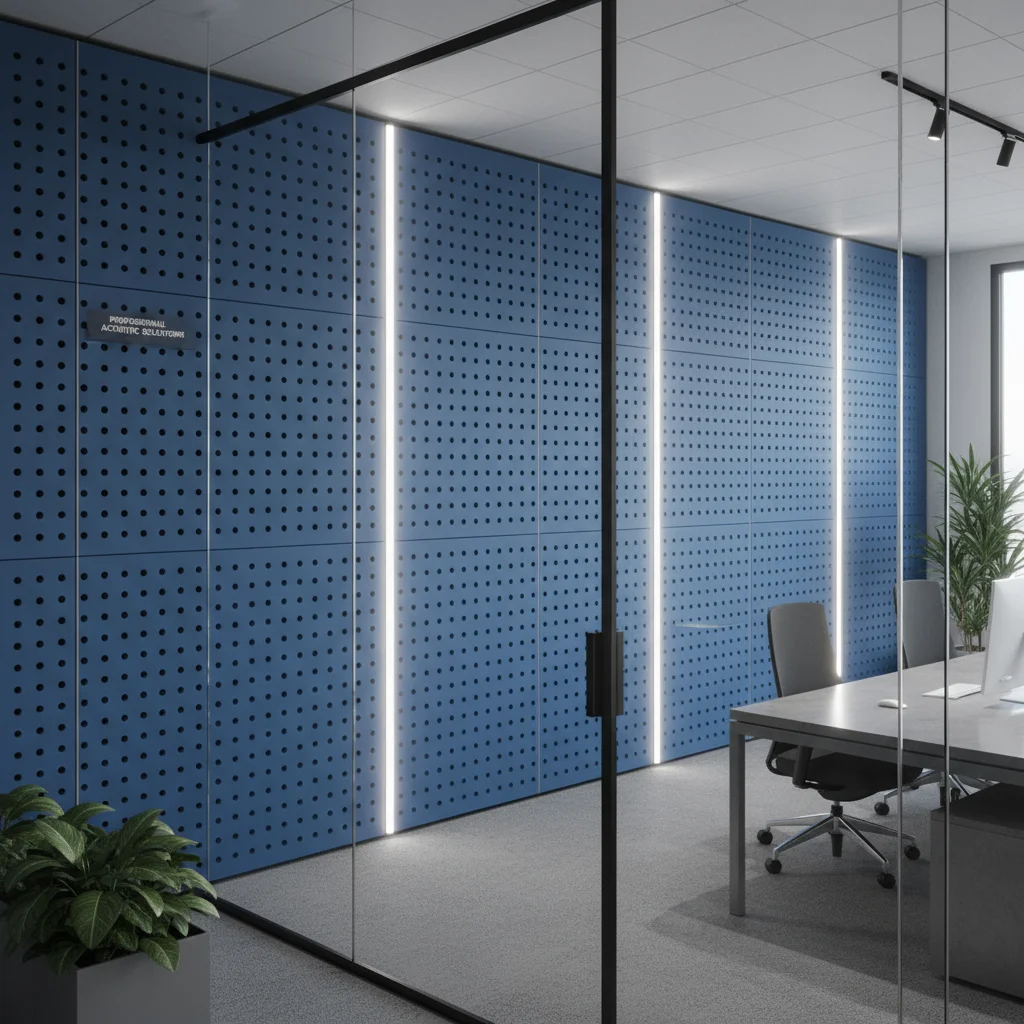Complete Guide to Plasterboard Types: Choose the Right Board for Your Renovation
Learn to differentiate plasterboard types by color and characteristics to choose the right one for your project.

If you're thinking about renovating, one of the words you'll hear most often is "Plasterboard" (or "Drywall"). It has become the standard for making partitions, false ceilings and linings quickly, cleanly and efficiently. But here comes the first and most important piece of advice: there is no single type of "Plasterboard".
Believing that all plasterboard is the same is the most common mistake (and sometimes, the most expensive) we see in construction projects. Choosing the wrong board can mean that, in a couple of years, you'll have moisture problems, lack of insulation or cracks.
Your project's success depends on understanding the different types of plasterboard that exist. And that's why we're here today. We're going to break down all types of plasterboard so you know exactly what to ask your installer (or what to buy if you're a DIY enthusiast).
⚠️ Common mistake
Using standard plasterboard in a bathroom to save €50 in material will cost you thousands of euros in moisture repairs in the future.
Quick Guide: Plasterboard Types by Color
The easiest and most visual way to differentiate boards is by their color. This is the basic "cheat sheet" that everyone should know, as it's the main form of classification. If you've noticed, plasterboard panels have the gypsum face on the inside and the cardboard visible on the outside, and that cardboard comes in different colors.
These are the plasterboard types by color and what each one means:
1. Standard Board (White or Gray) - Type N

It's the most common, the one you'll see in 90% of construction warehouses.
| Color: | White or grayish cardboard |
| Use: | It's the "all-purpose" board. Perfect for interior partitions that don't have special requirements, false ceilings in living rooms or bedrooms, and linings on dry walls. |
| Limitations: | Should not be used in areas with moisture (never in bathrooms!) or in areas that require special fire protection. It's the most basic. |
2. Moisture-Resistant Board (Green) - Type WA / H1

This is probably the most important special board and one you should never omit where needed.
| Color: | Green colored cardboard |
| Use: | It's the moisture-resistant plasterboard. It's treated with special additives (silicone salts) that make it repel water and ambient humidity. It's mandatory in: |
- Bathrooms (both walls and ceilings)
- Kitchens (especially the ceiling area and cooking front)
- Laundry rooms, garages or any area with high condensation
💡 Important nuance
It's moisture-resistant (repels ambient humidity and splashes), not waterproof (it's not made to be submerged or receive constant water jets). In the shower area, for example, you should install this green board and also apply a waterproofing membrane before tiling.
3. Fire-Resistant Board (Pink or Red) - Type FOC / F

You'll recognize it by its striking color. Its function is passive fire protection.
| Color: | Pink or red colored cardboard |
| Use: | This board has glass fibers and other additives in its gypsum core that drastically increase its fire resistance. It doesn't mean it won't burn, but it maintains its structural integrity for much longer (RF 30, 60, 120 minutes...), allowing evacuation. |
Where is it used? It's mandatory by regulation in many commercial premises, but in homes it's used for:
- Lining fireplaces
- Protecting metal or wood structures
- Garage walls that connect to the home
- Industrial kitchen ceilings
Beyond Color: Other High-Performance Plasterboard Types
If you thought everything ended with colors, you were wrong. Technology has advanced and now we have boards designed to solve very specific problems. If you ask your installer for one of these plasterboard types, they'll know you're serious.
4. Acoustic Boards (Blue) - Type Fonic / Phonique

| Color: | Usually blue or have special membranes |
| What do they do? | They're the dream of anyone living in an apartment. These boards have a much higher density than standard ones. This means the board is much heavier and vibrates less, attenuating sound transmission. |
| Use: | Ideal for separation partitions between rooms (especially bedrooms), to isolate yourself from the living room if you work from home, or on ceilings to reduce noise from the upstairs neighbor's heels. |
🔊 The trick
Real acoustic magic is achieved by combining this board with good interior insulation (like rock wool) and a specific mounting structure (double board, silent blocks, etc.).
5. High-Strength Boards (E.g. Habito or Diamant)
| Color: | Varies, but usually white or yellowish. What matters is not the color, but its hardness. |
| What do they do? | They solve the great plasterboard myth: "it's soft and you can't hang anything on it". These boards are the "brick" of plasterboard. |
| Use: | They have brutal impact resistance. They're perfect for hallways, children's rooms, commercial premises or gyms. But their great advantage is that you can hang kitchen cabinets, TVs or heavy shelving directly with a simple wood screw, without the need for special anchors. They're amazing. |
Let's Talk About Costs: Plasterboard Types and Prices
Here we come to the million-dollar question. Obviously, not all plasterboard types cost the same. Although prices vary greatly depending on the warehouse, geographic area and, above all, labor, we can establish a material price hierarchy.
From cheapest to most expensive, the scale is usually like this:
- Standard Board (Gray): It's the most economical.
- Moisture-Resistant Board (Green): Costs noticeably more than standard, but the difference is marginal compared to the cost of fixing moisture damage.
- Fire-Resistant Board (Pink): Usually has a similar or slightly higher price than green.
- High-Performance Boards (Acoustic or High Strength): Here we make a jump. These boards are "premium" products and can cost double or triple what a standard board costs.
💰 Professional advice
The advice from a professional about plasterboard types and prices is always the same: Don't skimp on the board type. Using standard plasterboard in a bathroom to save €50 in material will cost you thousands of euros in moisture repairs in the future. Installing an acoustic board on your bedroom partition is not an expense, it's an investment in rest.
Conclusion: What Type of Plasterboard Do I Need?
As you've seen, there's a universe of plasterboard types. The right choice depends 100% on where you're going to install it.
Quick selection guide:
- • For normal ceilings and partitions (living room, bedroom, hallway): The Standard (Gray) board is sufficient.
- • For bathrooms, kitchens and basements: It's non-negotiable to use the Moisture-Resistant (Green) board.
- • For fireplaces or garages: You must use the Fire-Resistant (Pink) board.
- • If you hate noise: Invest in the Acoustic (Blue) board.
- • If you have children or want to hang heavy furniture: Ask for the High-Strength (Habito) board.
Now you have the information. The next time you talk to your renovation team or installer, you'll be able to speak with authority about plasterboard types and make sure they're using the right material for each room.
Need Advice on Plasterboard Types?
Our experts help you choose the right board for your project. Contact us.
Consult Experts